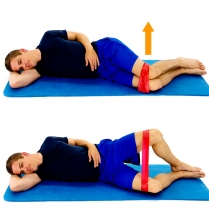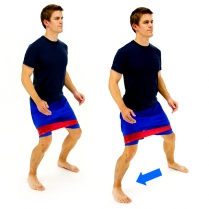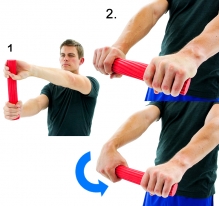What is Therapeutic Exercise?
Therapeutic exercise is the systematic, planned performance of bodily movements, postures, or physical activities intended to provide a patient/client with the means to
- Remediate or prevent impairments
- Improve, restore, or enhance physical function
- Prevent or reduce health-related risk factors
- Optimize overall health status, fitness, or sense of well-being
Therapeutic exercise is used in physical therapy to prevent disability, to minimize the progression of factors which result in disabilities, and to provide rehabilitation from pathological processes which result in loss of function and participation in the community. The PT/PTA team consider risk factors which may impact successful progression through a plan of care. Biological, lifestyle, environmental, and socioeconomic factors which impact treatment planning and progression are an integral part of PT/PTA -patient- centered approach to treatment.
How does therapeutic exercise prescription support a need for skilled physical therapy services?
- Therapeutic exercise effects on body tissues and systems are monitored for safety and effectiveness through objective means
- Therapeutic exercise is selected based on a sound foundation in anatomy, physiology, kinesiology, pathology, and behavioral/social sciences
- Therapeutic exercise is individualized to positively impact impairments, functional limitations, and disability for the patient/client
- Therapeutic exercise includes principles of motor learning to optimize skill and performance of movement-based activities
- Therapeutic exercise is specific to the targeted functional outcome for the patient
What factors contribute to the safety of a therapeutic exercise program?
- Health history
- Current health status (includes CP, Integument, Musculoskeletal, Neuromuscular)
- Exercise environment (equipment and surroundings)
- Accuracy of performance; includes monitoring for substitutions
- Fatigue/Endurance
- Proper body mechanics and joint protection habits by the treating therapist
Key Terms in Therapeutic Exercise
|
Term |
Definition |
|
Flexibility |
range of motion allowed at a joint static - PROM at a joint dynamic - ease of movement within the ROM |
|
Strength |
maximum force produced in a single contraction |
|
Endurance |
sustained contractions or effort over time |
|
Power |
a function of speed and strength within a muscle |
|
Intensity |
level of effort |
|
Duration |
length of time (session or over a rehabilitation/exercise program) |
|
Frequency |
Number of times exercise is performed (session, rehabilitation plan) |
|
Position |
Alignment of limb or body (e.g., related to gravity, end-range, etc.) |
|
Progression |
Increasing demand of exercise to effect a change in one or more outcomes (e.g., speed, accuracy, complexity, endurance, power, etc.) |
|
SAID |
"specific adaptation to imposed demand" - selected exercises should match intended effect |
|
Overload |
adaptation and training requires a demand greater than normal stress |
Types of Resistance
|
Gravity |
Moving against gravity (concentric); and slow lowering with gravity (eccentric); effective for weakened muscles |
|
Body weight |
Leverages body weight as resistance (e.g. push up, squat, side plank) |
|
Small weights |
Cuff weights or free weights allow for high repetition motions to build endurance and strengthen weaker muscles |
|
Surgical tubing/theraband |
Variable resistance to motion dependent on the elastic qualities of the tubing |
|
Machines |
Typically used for larger muscle groups to build strength/power |
|
Manual resistance |
Clinician uses hand placement during motions or positions to resist through parts of an arc or throughout the arc of motion |
Strengthening Programs
Therapeutic exercise selection dependent on the patient goals, tissue healing stage, general conditioning, and pain response. Typical resisted exercise progression gradually increases the load on contractile and non-contractile tissue to optimize function
- small arc submaximal contractions: concentric/eccentric

- full range of motion: concentric/eccentric (e.g., bicep curl with hand weight)
- functional activity specific plane submaximal concentric (e.g. sidestep with elastic band)

- functional ROM submaximal eccentric

- isotonics
Free Exercise Resource
Would you like to have access to modifiable home exercise pictures and instructions? Try HEP2Go.com! Create an account and design your own home exercise programs and reinforce your understanding of muscle action and function at the same time.
I use this in the clinic and its just great. Don't forget, you have access to home exercises through your APTA membership: Go to PTNow and the Rehab Reference Center to find the exercises that align wiith the PT plan of care.